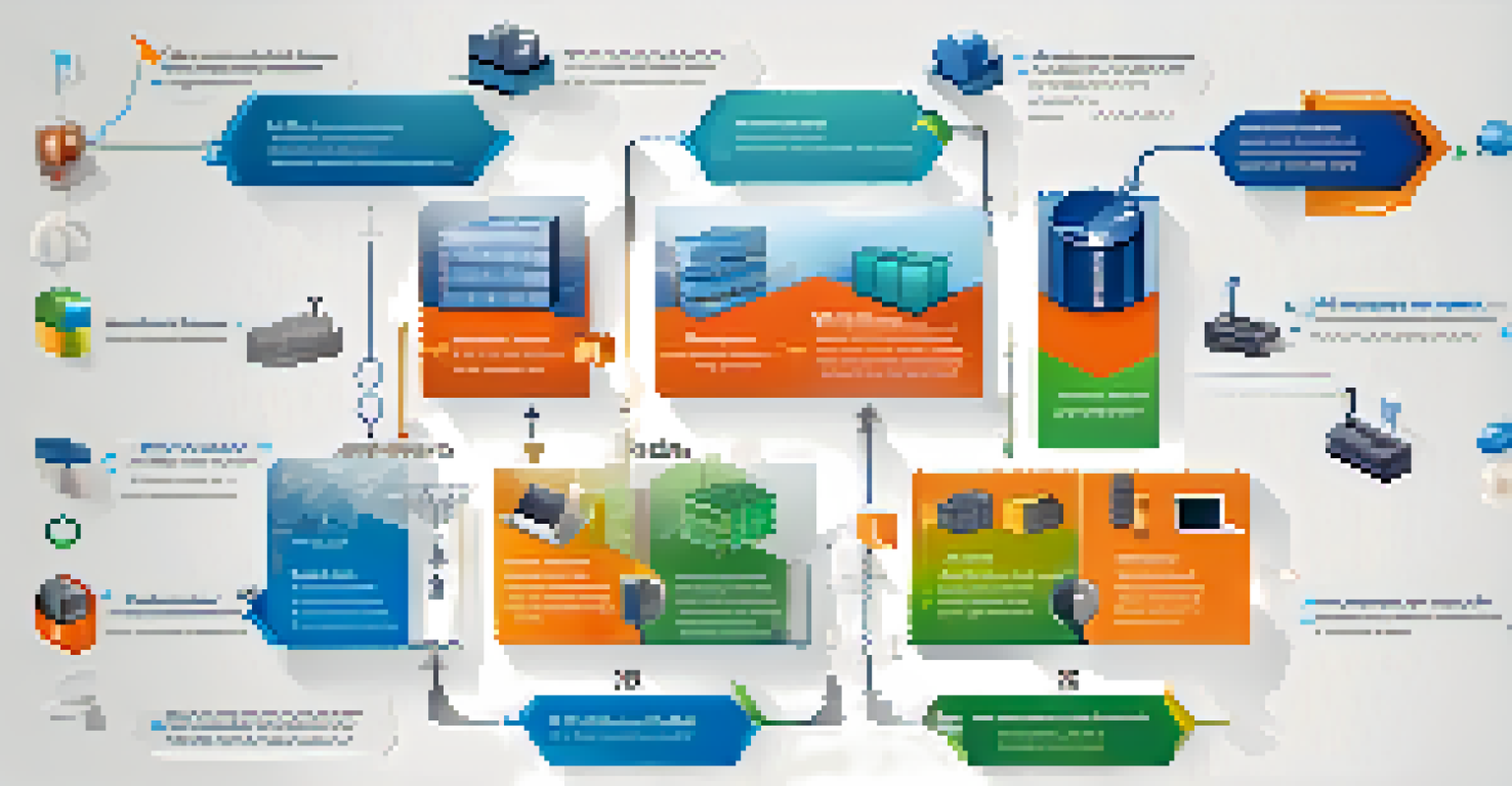Implementing Blockchain to Improve Supply Chain Visibility

Understanding Supply Chain Visibility and Its Importance
Supply chain visibility refers to the ability to track products as they move through the supply chain. This tracking allows companies to understand the flow of goods, from raw materials to end consumers. Enhanced visibility not only helps in inventory management but also strengthens relationships with suppliers and customers alike.
Supply chain visibility is the key to unlocking operational efficiency and building trust with customers.
In today’s global market, customers demand transparency about the origins and journey of their products. Companies that can showcase this transparency often gain a competitive edge. When businesses can confidently share their supply chain processes, they build trust and credibility with their audience.
Moreover, visibility can help identify bottlenecks, reduce delays, and streamline operations. By adopting technologies that enhance visibility, organizations can become more agile and responsive to market changes, ultimately leading to improved customer satisfaction and loyalty.
What is Blockchain and How Does It Work?
Blockchain is a decentralized digital ledger technology that records transactions across many computers in a way that the registered transactions cannot be altered retroactively. This creates a secure and transparent method for tracking transactions and data. Each transaction is stored in a block, and these blocks are linked together in chronological order, forming a 'chain'.

One of the key features of blockchain is that it is immutable, meaning once data is entered, it cannot be changed without consensus from the network. This feature enhances security and trust, making blockchain an ideal candidate for supply chain applications. With each participant in the supply chain having access to the same data, discrepancies can be minimized.
Supply Chain Visibility is Crucial
Understanding and tracking product movement enhances inventory management and builds trust with suppliers and customers.
Additionally, blockchain can streamline various processes by reducing the need for intermediaries. This not only cuts costs but also speeds up transactions, making the entire supply chain more efficient. As a result, businesses can respond to changes and challenges more effectively.
Benefits of Blockchain for Supply Chain Visibility
One of the primary benefits of implementing blockchain in supply chains is enhanced transparency. All participants can access real-time data about product movement and status, which helps in making informed decisions. This level of transparency can deter fraud and ensure compliance with regulations.
Blockchain technology is paving the way for greater transparency and accountability in supply chains.
Another significant advantage is increased traceability. In the event of a product recall, blockchain allows companies to quickly identify affected batches and trace them back to their source. This rapid response capability can significantly mitigate risks and safeguard consumer trust.
Furthermore, blockchain can lead to cost reductions. By minimizing paperwork, reducing fraud, and enhancing operational efficiencies, companies can save money. These savings can then be redirected towards further innovations and improvements in the supply chain.
Challenges in Implementing Blockchain in Supply Chains
Despite its many advantages, implementing blockchain in supply chains is not without challenges. One major hurdle is the need for collaboration among all stakeholders. If not everyone is on board, the system can become fragmented, limiting its effectiveness.
Additionally, the technology itself can be complex and may require significant investment in infrastructure and training. Organizations must be prepared to invest time and resources into understanding and integrating blockchain solutions. This can be daunting for smaller businesses with limited budgets.
Blockchain Enhances Transparency
Implementing blockchain technology provides real-time access to data, improving traceability and reducing fraud in supply chains.
Lastly, regulatory and legal considerations can pose challenges. The evolving nature of blockchain technology means that laws and regulations may not yet be fully established. Companies need to stay informed and adapt to these changes to ensure compliance.
Real-World Examples of Blockchain in Supply Chains
Several companies are already leveraging blockchain to enhance their supply chain visibility. For instance, Walmart utilizes blockchain technology to track food products from farms to store shelves, allowing them to quickly detect and respond to contamination issues. This not only protects consumers but also enhances overall supply chain efficiency.
Another example is De Beers, which uses blockchain to trace the provenance of diamonds. By tracking each diamond from mine to market, they can ensure that their products are conflict-free and ethically sourced. This transparency builds consumer trust and aligns with growing ethical consumerism trends.
These examples illustrate the varied applications of blockchain across industries. As more companies recognize its potential, we can expect to see a wider adoption of this technology, further revolutionizing supply chains globally.
How to Start Implementing Blockchain in Your Supply Chain
If you’re considering blockchain for your supply chain, start by assessing your current processes and identifying areas where visibility is lacking. Understanding your specific needs will help you determine how blockchain can be integrated effectively. It’s essential to have clear objectives before diving into implementation.
Next, engage with stakeholders across your supply chain. Building consensus and collaboration is crucial for a successful implementation. Involve suppliers, distributors, and even customers in discussions to ensure everyone understands the benefits and is willing to participate.
Collaboration is Key to Success
Successful blockchain implementation requires collaboration among all stakeholders to avoid fragmentation and realize its full potential.
Finally, consider partnering with technology providers who specialize in blockchain solutions. They can guide you through the technical aspects and help tailor a solution that fits your business needs. With the right approach, you’ll be well on your way to improving supply chain visibility.
The Future of Blockchain in Supply Chain Management
Looking ahead, the future of blockchain in supply chain management appears promising. As technology continues to evolve, we can expect to see even more advanced features and capabilities. This could include enhanced interoperability between different blockchain systems, making it easier for companies to share data securely.
Moreover, with increasing consumer demand for transparency and sustainability, businesses will likely adopt blockchain to meet these expectations. As companies strive for greater accountability, blockchain can provide a robust framework to track and verify claims about products and practices.

Ultimately, as more organizations embrace this technology, it will likely drive innovation and transformation across industries. Those who adapt early will not only improve their supply chains but also set themselves apart in a competitive marketplace.